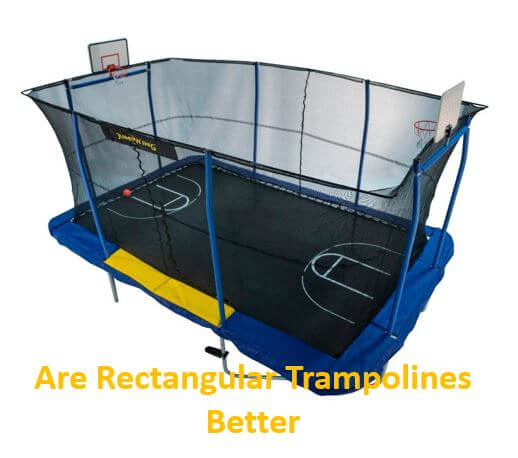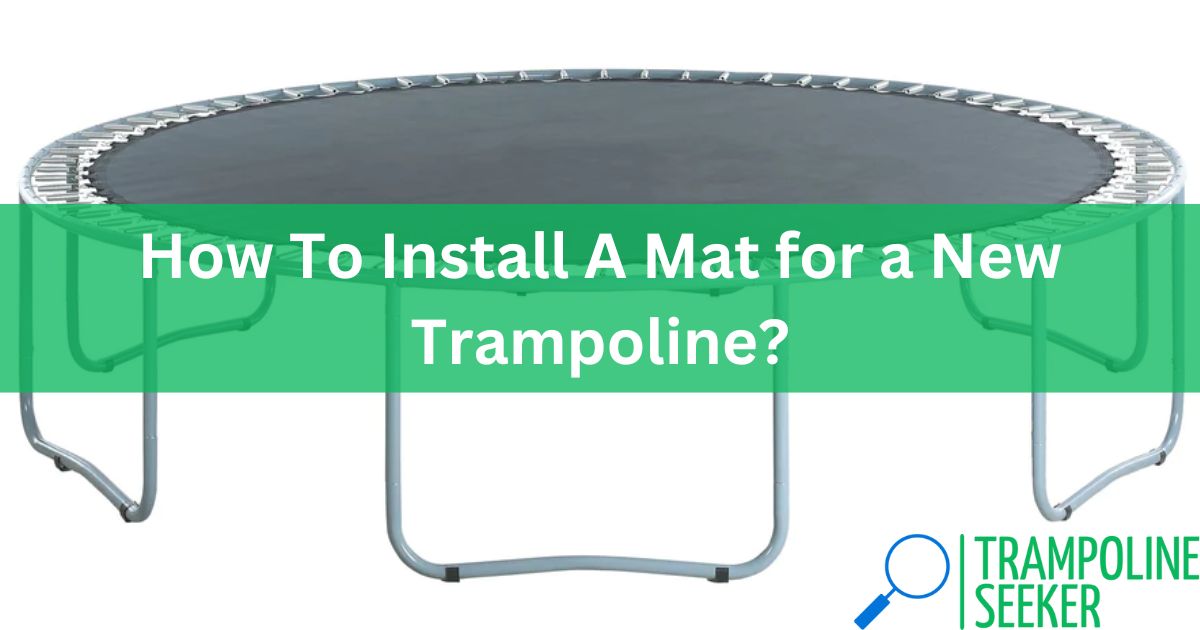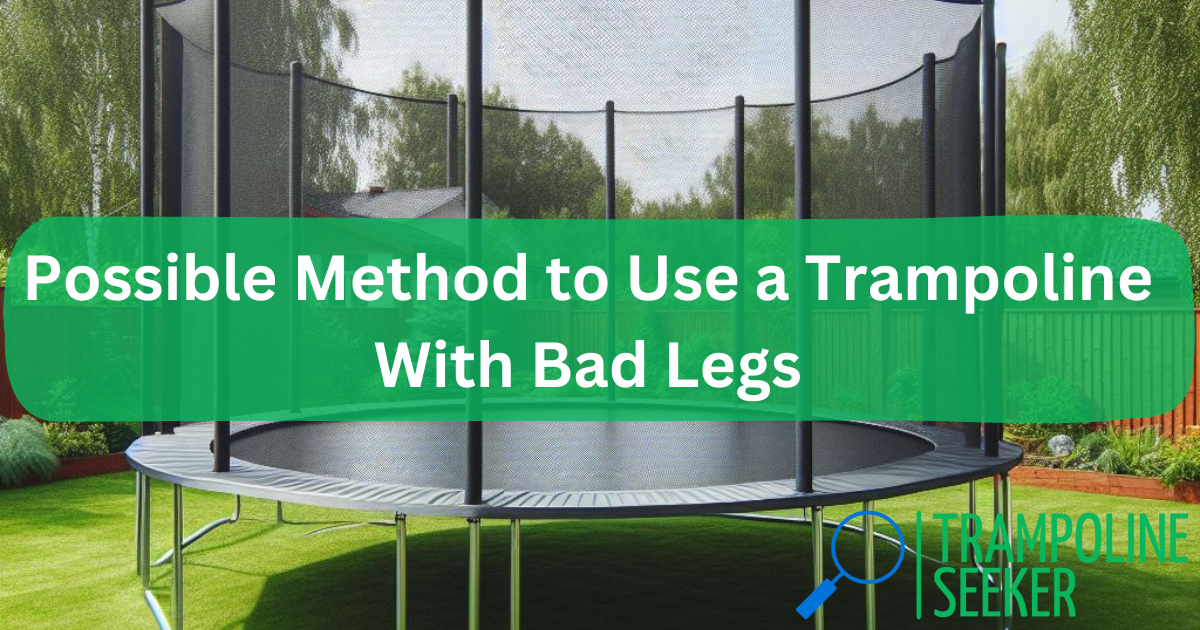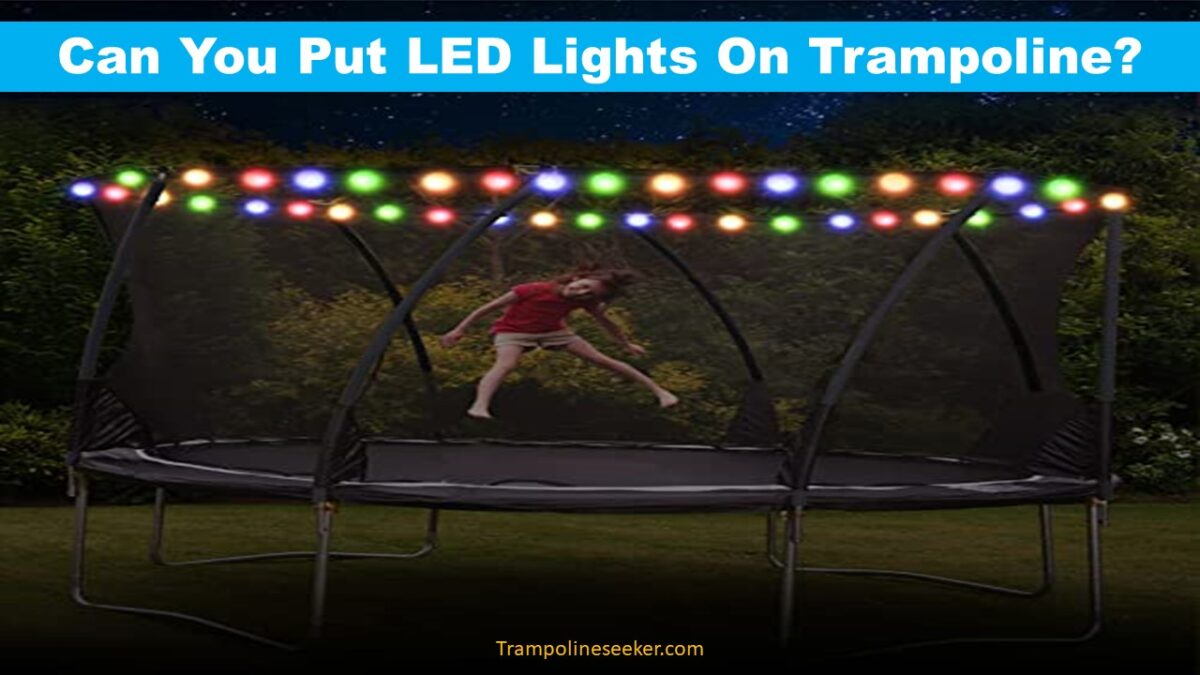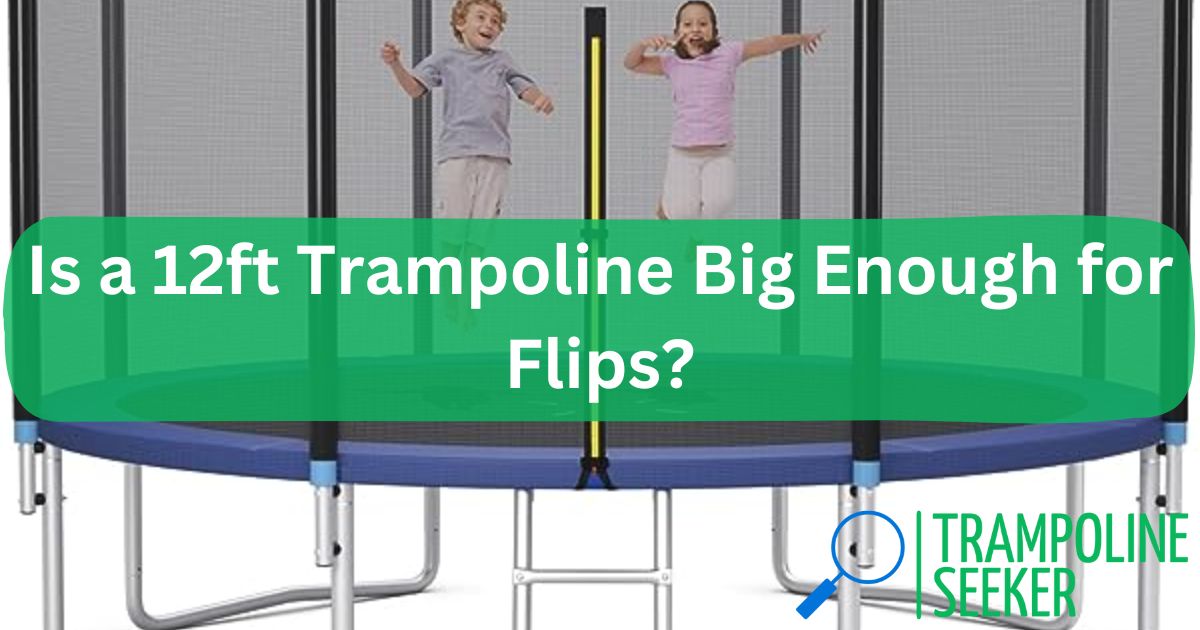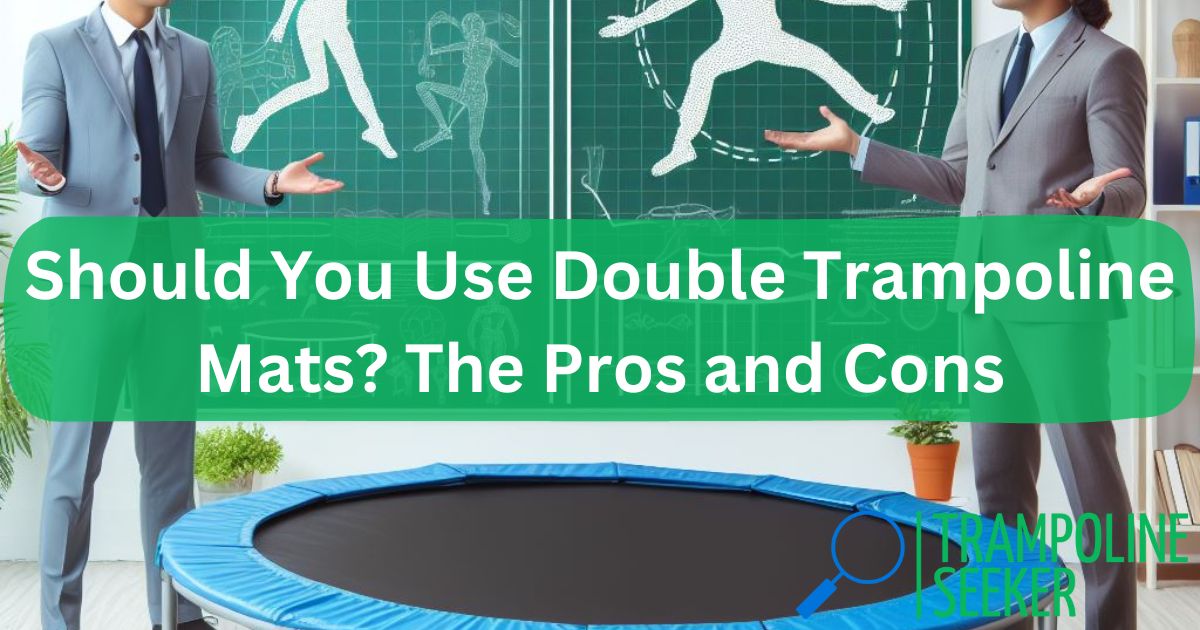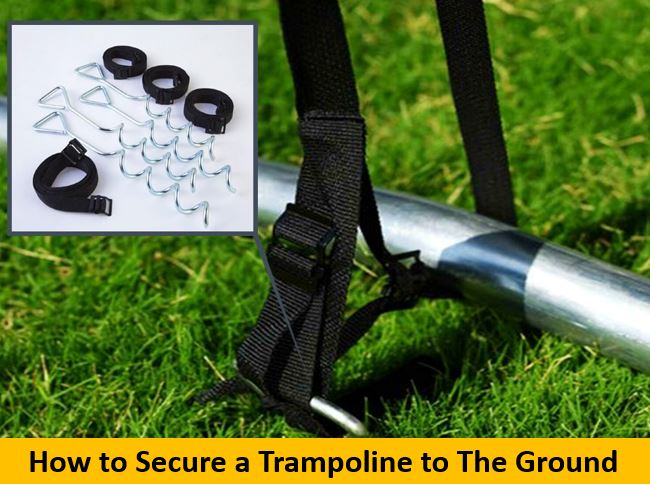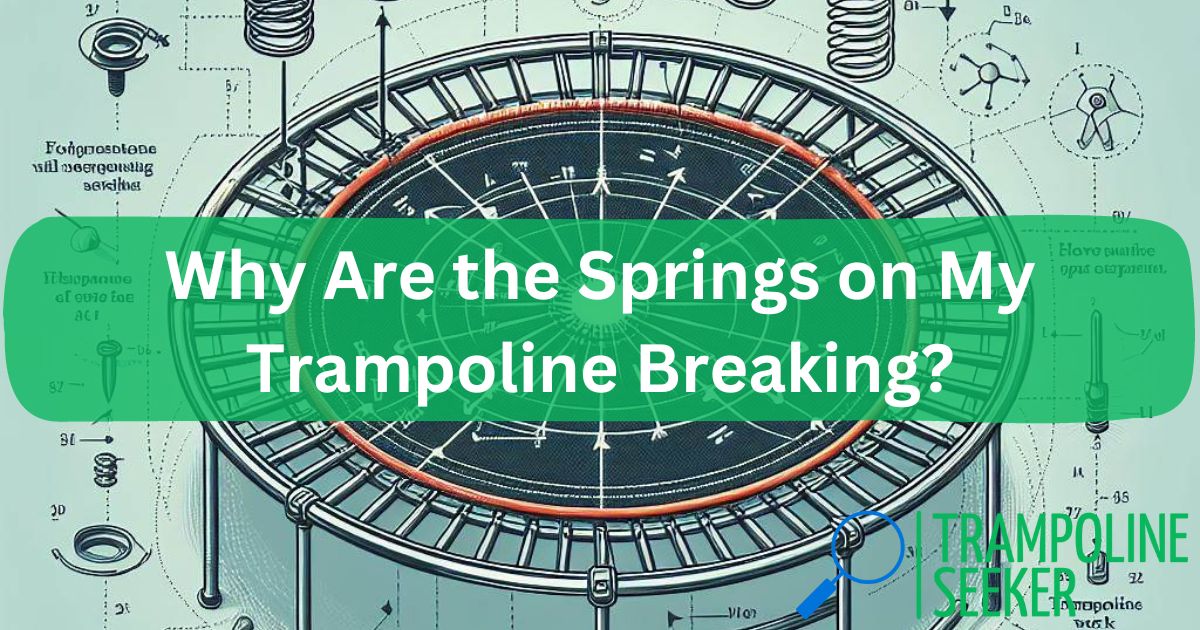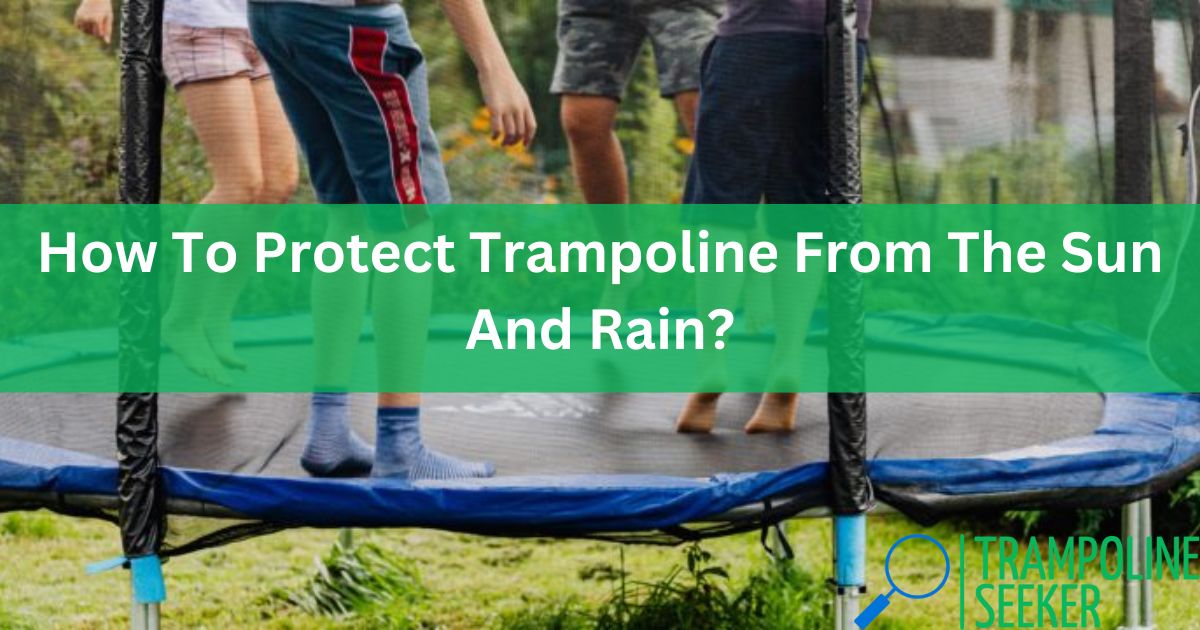It’s frustrating to deal with a trampoline that makes annoying squeaking noises. Your children may not realize how much the trampoline’s noise is bothering you, but you should still take precautions to spare yourself a migraine whenever you use it. Taking precautions before assembling your trampoline is the best way to avoid having to deal with the noises once it is complete.
So, Why Does My New Trampoline Squeak? While it may be impossible to completely silence the world, annoyingly loud sounds can be negated.
Let’s investigate their root causes and look for ways to bring them down to a manageable level. Due to differences in construction and material, some trampolines are more likely to make noise than others. Everything that follows is relevant to the vast majority of commercially available trampolines.
Unwanted trampoline noises are mainly a result of:
- Two or more dry components in direct contact with each other, combined with.
- Movement under load; between these surfaces.
Let’s Analyze the Causes and Think About How to Fix Them
Vertical Frame Joints
These are the trampoline’s legs; they hold up the horizontal frame pieces mentioned in item 1 above and are a potential source of noise if not properly greased during assembly.
Net Pole Structure
While these could be the source of the noisy squeaks, we haven’t noticed them be the case.
Horizontal Frame Joints
The frame (which the springs attach to) is made of steel tube, and its joints are also steel on steel. Squeaking is a common problem for brand-new trampolines because the manufacturing lubricant left on the frame parts wears off quickly. Before putting the frame together, you should grease the joints.
Spring Hooks
Friction-induced squeaks can originate at the point where the spring hook enters the frame slot. In most cases, the above two items should be checked first, before moving on to the springs. Oil or grease-based lubricant should not be used on the end of a spring hook as this can attract dust, which then combines with the lubricant to form a grinding paste, speeding up wear. Dry lubricants, such as silicone, are worth trying if you suspect dirty or dusty springs are the source of the noise.
Weather
Trampolines are typically used outside, which means they are subjected to the elements of heat, moisture, and dirt over time. Taking the time to grease the joints during initial assembly will go a long way toward protecting them from the elements over time.
Movement of Rubbing Surfaces
When a person jumps on a trampoline, their momentum is transferred from their body to the trampoline’s mat, springs, and the main framework, where it is supported by the ground before being transferred back to their body. The components function as intended when used in this way, but noise can be introduced due to the inherent, slight movement that occurs during the jumping process.
When a person jumps on a trampoline, they apply a variety of forces in different directions, subjecting the trampoline to a wide range of loads. The transfer of energy causes the parts to move in opposition to one another. When the frame joints are dry and subjected to large contact forces, squeaks can result from the momentary friction that this creates.
When the spring is extended or retracted, the hook slides ever-so-slightly into the slot in the frame. If you grasp this concept, you’ll have a leg up on pinpointing the source of the disturbance.
Extreme frame movement can occur if the trampoline is not placed on flat, even ground; for example, the initial portion of a jumping force will attempt to level the frame if the trampoline is not placed on flat, even ground (a good way to imagine this is if one leg is over a pothole).
Bounce efficiency is reduced and effort is diverted to leveling the frame if it isn’t planted squarely on the ground. The frame will also momentarily deform with each jump, increasing the stress on the joints and thus the likelihood of irritating squeaks due to increased friction.
Examining the trampoline’s frame in motion at various heights while jumping is a good way to ensure that it is being loaded evenly at all points.
When you put a trampoline on a firm, unmovable surface like concrete or pavers, there is no give for the frame and legs to bed in. Any noises in the frame will become more noticeable on a hard surface. If you must place your trampoline on concrete or pavers, you can dampen the noise by placing a rubber or carpet strip under the leg contact areas.
Think about the noise level in the area and whether or not a trampoline would be beneficial there. Some sounds will be muffled by shrubs, trees, and the like, while a paved courtyard may actually amplify them. Trampolines near kitchen windows provide easy viewing but often come with increased noise levels.
What Lubricant Should I Use?
Although they may work temporarily, spray lubricants like WD40 are not a sustainable option. Since they last longer, solid lubricants are preferable for use on frame joints. Any solid grease will do; there are many varieties to choose from, including general-purpose grease, extreme-pressure grease, moly-based grease, lithium-based grease, marine grease, axle grease, and specialty lubricants like anti-seize.
In most cases, 100 grams of grease will do the trick. In the event that you do not have any on hand, you may want to borrow some from a friend or purchase some from a nearby hardware store or gas station.
Step-By-Step Instructions for Stopping Your Trampoline from Squeaking
Grease The Trampoline Joints
- As the squeaking noise is produced by dry metal rubbing against dry metal, you should take extra care around the joints, which are the most common source of this type of noise.
- You should get some grease and lightly apply it to the joints before you begin assembling the trampoline.
Safety First
- Wear sturdy gloves to keep your hands safe while you grease the trampoline’s pivot points.
- If you aren’t careful, the metal burr can cause serious injury to your hands.
Testing
- Now that you’ve greased and assembled your trampoline, you should give it a try.
- Encourage your children to jump up and down on it.
- Assuming things are calm and secure, further action is not required.
Trampoline Squeak Prevention
- The trampoline should be kept in its fully upright position to prevent future squeaking.
- The grease will protect the joints from minimal stress, extending their useful life.
- Moving can be stressful enough without having to worry about dismantling your trampoline as well.
- To quiet a trampoline that’s been used for a while, remove the padding and spray the frame’s joint and springs with WD40 or a similar product. Dust won’t stick to the trampoline’s metal if you remove any excess lubricant.
What If My Trampoline Is Already Assembled and Squeaks?
Trampoline noise can be annoying; while the cause of some types of trampoline noise may be obvious, other types may be more challenging to identify.
Noises made by the frame or springs can travel through the entire structure and fool the listener into thinking they are coming from somewhere else.
Typical Sources of Noise Include
- Steel-on-steel friction in dry conditions
- The permissible gap between pieces (the clearance between the steel surfaces)
- The shift in the joint (transferred energy from when the trampoline is jumped on)
Areas to Recheck or Eliminate
- Start by spraying some WD40 or another spray lubricant into the joints to see if that helps.
- Have the kids jump on the trampoline while you go around spraying more WD40 on the frame joints.
- Do the bottoms of the legs bear weight similarly? (each leg has two points of contact)
- Is there a noisier part of the trampoline where kids tend to jump? This could be useful for narrowing down the scope of the investigation.
- First, use WD40 to isolate the offending component before resorting to a more permanent lubricant; the frame comes up first, followed by the spring holes.
- Take off each leg, grease the connections, and then put the legs back on. This keeps you from having to untie the entire trampoline.
- Is the trampoline fairly flat? The trampoline’s noise can often be silenced by simply adjusting its height.
What If the Trampoline Is Still Noisy?
If the kids have jumped on the trampoline after all of these checks and it is still noisy, it is time to disassemble the trampoline and inspect the frame joins, especially the square tube outer joiners, for burrs and wear patterns.
- Grease all joints and file off any sharp edges that might cause contact.
- Make sure the slots for the springs are in good working order.
Some of the slots may now have raised burrs; these can be filed down if there is excessive wear to the spring holes, which could result in the spring hook no longer having any clearance in the slot.
Only two people I know of had to take apart the trampoline; everyone else was fine with the spray and grease method. This article should help you avoid making any embarrassing jumping noises.
Read Now:


